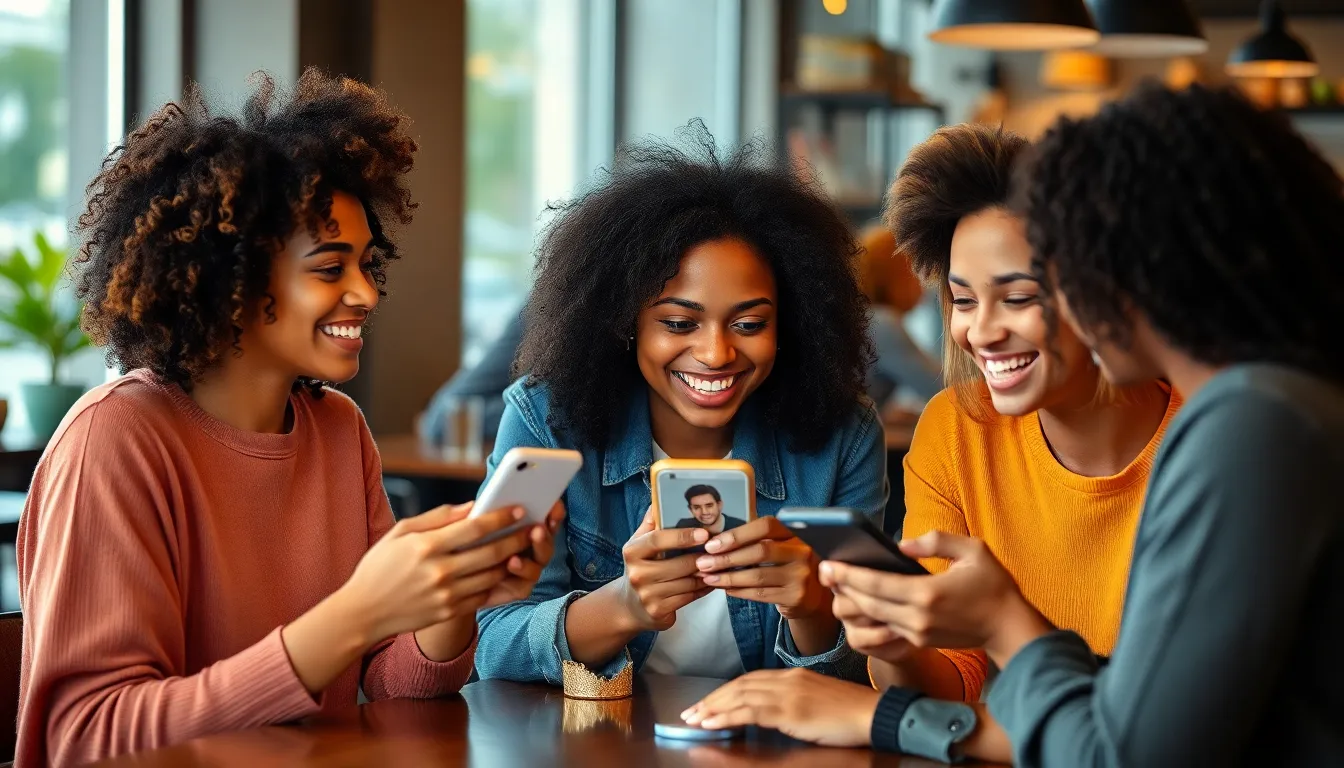Table of Contents
ToggleDating in today’s world is like navigating a maze filled with swipes, likes, and the occasional ghosting. With each passing year, new trends emerge, turning the dating scene into a vibrant tapestry of quirky behaviors and unexpected norms. From virtual first dates to the rise of niche dating apps, it’s clear that love has gone digital—and it’s not looking back.
Overview Of Dating Trends
Modern dating trends reflect a rapid shift towards online interactions. Virtual first dates have gained popularity, allowing individuals to connect without geographical boundaries. Niche dating apps target specific interests, enhancing user experiences by catering to diverse preferences.
Ghosting remains prevalent and impacts emotional well-being, revealing the complexities of modern relationships. The increased use of video dates showcases the necessity for genuine connections in a virtual setting.
Safety concerns play a significant role in dating, leading many to prioritize their well-being when meeting new partners. Dates are often planned in public spaces to ensure comfort and security, reflecting a conscious effort to create a safe environment.
Inclusivity trends become central, with dating platforms focusing on representation and diverse orientations. Communication styles have evolved, adjusting to the needs of a digital audience where messaging often replaces face-to-face conversations.
Moreover, self-care has emerged as an important theme, encouraging individuals to prioritize their mental health while navigating the dating scene. The desire for authenticity prompts users to seek meaningful connections instead of fleeting encounters.
Trends indicate a continued evolution of the dating landscape, where technology influences how connections are formed and maintained. Insights into these patterns reveal a dynamic yet challenging environment for those seeking love in the digital age.
Online Dating Evolution

Online dating continues to transform rapidly, integrating technology with personal connections. The landscape now reflects diverse preferences and lifestyles through various platforms.
Popular Dating Apps
Tinder, Bumble, and Hinge dominate mainstream dating apps, each offering unique features. Tinder emphasizes swiping for instant matches, while Bumble empowers women to initiate conversations. Hinge encourages users to share more about themselves, fostering deeper connections. Niche apps like JSwipe and Grindr cater to specific communities, enhancing visibility for users with particular interests. The growth of these platforms showcases the increasing personalization in online dating experiences.
Changing User Demographics
Younger generations flock to online dating for quick access and diverse options. According to a recent study, 30% of singles aged 18-29 use dating apps, significantly higher than older age groups. Individuals in their 30s and 40s increasingly explore online venues as well, leading to more inclusive dating environments. Additionally, platforms now focus on LGBTQ+ representation, enhancing accessibility for marginalized groups. These trends indicate a shift toward broader acceptance and embrace of online dating across different demographics.
Social Media’s Role In Dating
Social media plays a crucial role in shaping modern dating dynamics. Platforms like Instagram, TikTok, and Twitter influence how individuals connect and understand dating trends.
Influence Of Influencers
Influencers shape perceptions around dating, often setting new standards for romance. They showcase their relationships and date ideas, promoting what’s considered desirable. Many singles turn to these influencers for advice, fostering trends such as lavish date nights or unique proposals. Followers often emulate these curated experiences, leading to heightened expectations. Data indicates that more than 40% of young adults look for relationship inspiration through social media influencers. Authenticity remains key, though, as users seek genuine content that resonates with their own experiences.
Date Culture On Social Platforms
Date culture on social platforms emphasizes convenience and creativity. Users frequently post about their dating lives, sharing everything from quirky date ideas to relationship milestones. This openness creates a sense of community, where individuals can relate to one another’s experiences. Many couples use platforms to document their journey, encouraging others to explore new dating avenues. Additionally, hashtags related to dating trends, such as #DatingFails or #DateNight, gather large audiences, fostering engagement. Statistics show that nearly 50% of daters report discovering significant others through social media interactions, highlighting the medium’s evolving role in the dating landscape.
Shifts In Relationship Norms
Modern dating showcases significant shifts in relationship norms, challenging traditional views. Non-traditional relationship structures are gaining popularity among many individuals. More people now embrace polyamory, where individuals maintain multiple romantic relationships with consent. Others explore open relationships, allowing partners to seek connections outside the primary bond. Data indicates approximately 4% of adults in the U.S. engage in non-monogamous relationships, reflecting changing attitudes toward love and commitment.
Communal dating practices are reshaping social interactions in romantic contexts. Groups often participate in outings, reducing the pressure of one-on-one dates. This approach fosters a sense of community, making it easier to meet diverse individuals. Friends frequently join singles in social circles, encouraging multiple connections in organic settings. As a result, communal dating enhances social bonds while broadening relationship possibilities.
The Impact Of Technology
Technology significantly influences modern dating experiences. As platforms evolve, they introduce innovative ways to connect.
AI And Dating Matching
AI streamlines the matching process, utilizing algorithms to analyze user preferences and behaviors. Using this technology, dating apps can suggest compatible matches based on shared interests. Data shows that approximately 70% of users find success through AI-driven suggestions. Emerging apps are adopting AI tools to provide personalized experiences, helping users navigate potential connections with ease. With continuous advancements, AI has become integral to the dating landscape, fostering authentic connections.
Virtual Reality Dates
Virtual reality dates offer immersive experiences that transcend physical boundaries. Creating realistic environments allows users to engage in unique ways, enhancing emotional connections. Many platforms now integrate VR technology, facilitating enriched interactions. Statistics reveal that about 25% of singles express interest in virtual dating experiences. By using VR, individuals can explore shared activities, such as virtual concerts or tours, promoting engagement while maintaining safety. This innovative approach reshapes how people perceive dating, emphasizing creativity and connection in the digital age.
Modern dating is a constantly evolving landscape shaped by technology and societal shifts. As individuals navigate through swipes and virtual interactions they seek deeper connections and authentic experiences. The rise of niche dating apps and the integration of social media reflect a growing desire for inclusivity and representation.
With safety and mental health at the forefront daters are prioritizing well-being while exploring new relationship dynamics. The influence of social media and AI continues to redefine how connections are made fostering a sense of community among users. As trends shift and adapt it’s clear that the quest for love remains as complex and multifaceted as ever.






